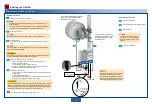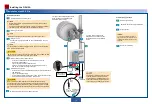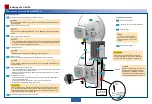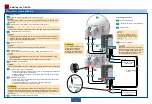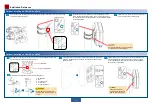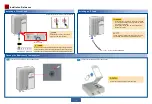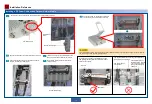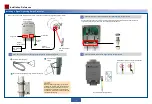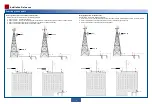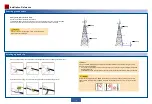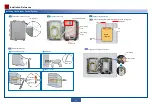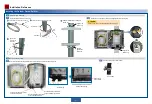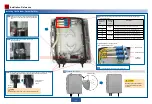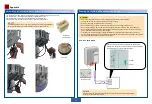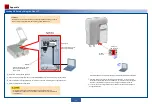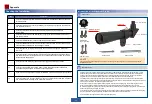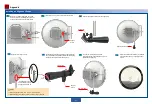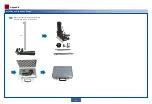
1. Bend radius
For power and PGND cables, ensure a bend radius of at least three times the cable diameter.
2. Cable binding
• Bind different cables separately. Maintain an interval of at least 30 mm between cable bindings.
• Bind cables securely and neatly, without damaging the cable jackets.
• Ensure that cable ties face the same direction and are aligned in rows horizontally.
• Cut off the excess of each indoor cable tie but leave a slack of about 5 mm for each outdoor cable tie. Ensure
that all cut surfaces do not have sharp edges.
• After installing cables, attach labels or tags to the two ends of each cable.
3. Safety
• Lay out cables away from sharp objects or jagged walls, or protect cables using conduit.
• Lay out cables away from heat sources, or add heat-insulation materials between cables and heat sources.
• At turns or near equipment, allow sufficient slack in the cables and coil them (with a diameter of about 0.6 meters)
for future use.
4. Indoor cable routing
• Route cables into equipment rooms through feeder windows.
• Seek help indoors when routing cables into equipment rooms.
• Waterproof feeder windows.
General requirements
Requirements for laying out cables outdoors
•
Route cables along the planned path, use outdoor cable ties or feeder clamps to bind cables properly and neatly at
intervals of about 1 meter, and cut off the excess of each cable tie without leaving sharp edges (ensuring a slack of about 5
mm).
•
Drip loops must be made for outdoor cables below ports or near feeder windows and ensure a bend radius equal to or
greater than the required minimum bend radius.
•
After you form a drip loop in a cable, coil the cable into a roll with the diameter greater than 0.6 meters and bind the rollto
the tower or pole for future use.
•
Check whether there is a probability that outdoor cables will be damaged by external environmental factors. If yes, you are
advised to protect outdoor cables, for example, by putting the cables through tubes.
•
The cables to be protected consist of power cables, outdoor network cables, outdoor fibers, and IF cables.
Requirements for laying out PGND cables
•
Connect PGND cables of devices at the same site to the same ground bar.
•
Do not route PGND cables overhead in outdoor scenarios.
•
Bind PGND cables separately from outdoor network cables and leave an appropriate distance between the bundles.
•
Do not add switches or fuses on PGND cables.
Installing sign plate labels
Attach a sign plate label to each cable end. To do so,
pass cable ties through the holes in the label and
attach the label to one end of the cable, about 100 mm
to 200 mm away from the connector.
Tighten the cable ties to fix the label on the cable.
Then, cut off the excess of each cable tie, leaving
a slack of about 5 mm and no sharp edges.
1.
Outdoor cable tie
2.
Sign plate label
3.
Cable
Drip loop
Indoor
Drip loop
Drip
loop
IF cable
ODU
Outdoor
cable
23
Outdoor cable ties may be damaged due to installation and environmental factors. You are recommended to use feeder
clamps in high-temperature and dry environments or in freezing cold environments.
Laying out Cables
Installation Reference

